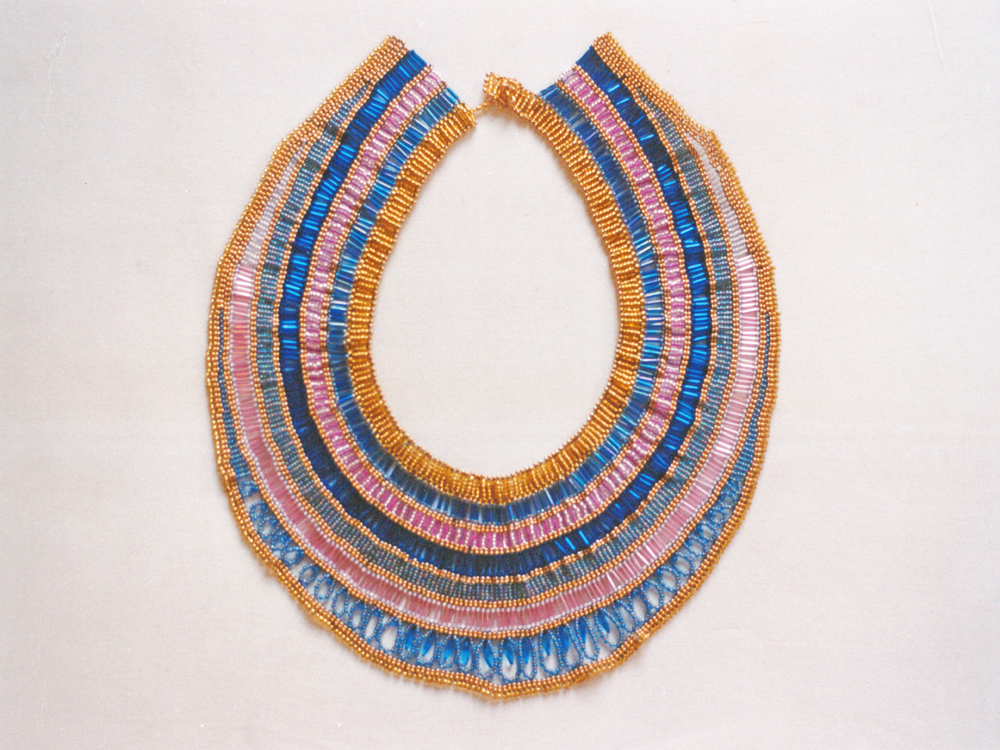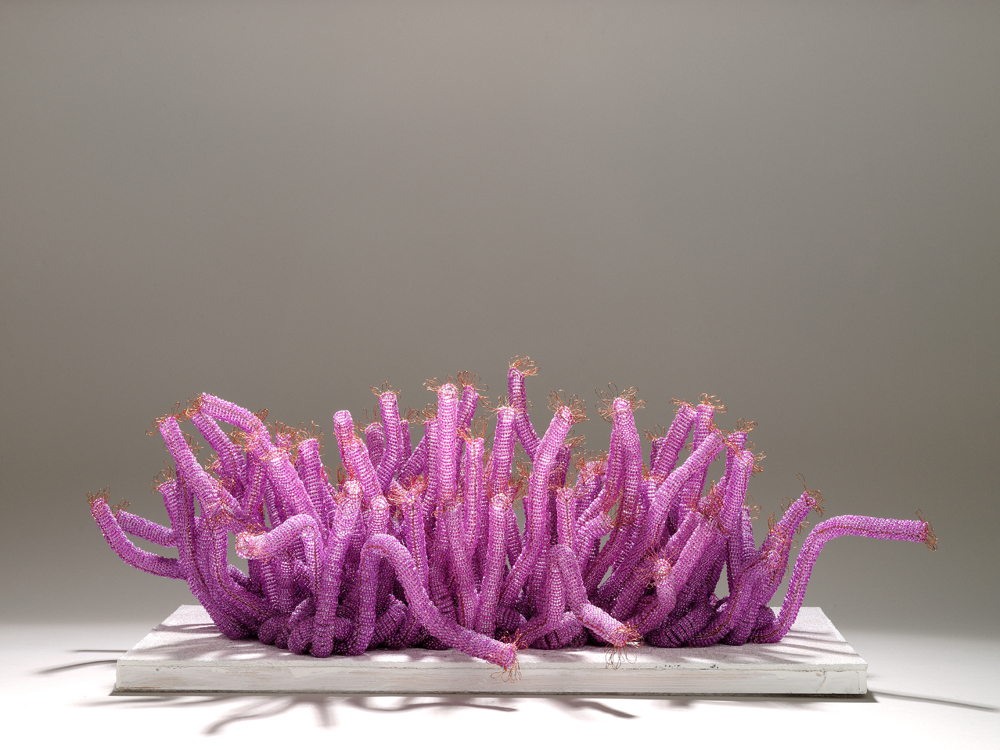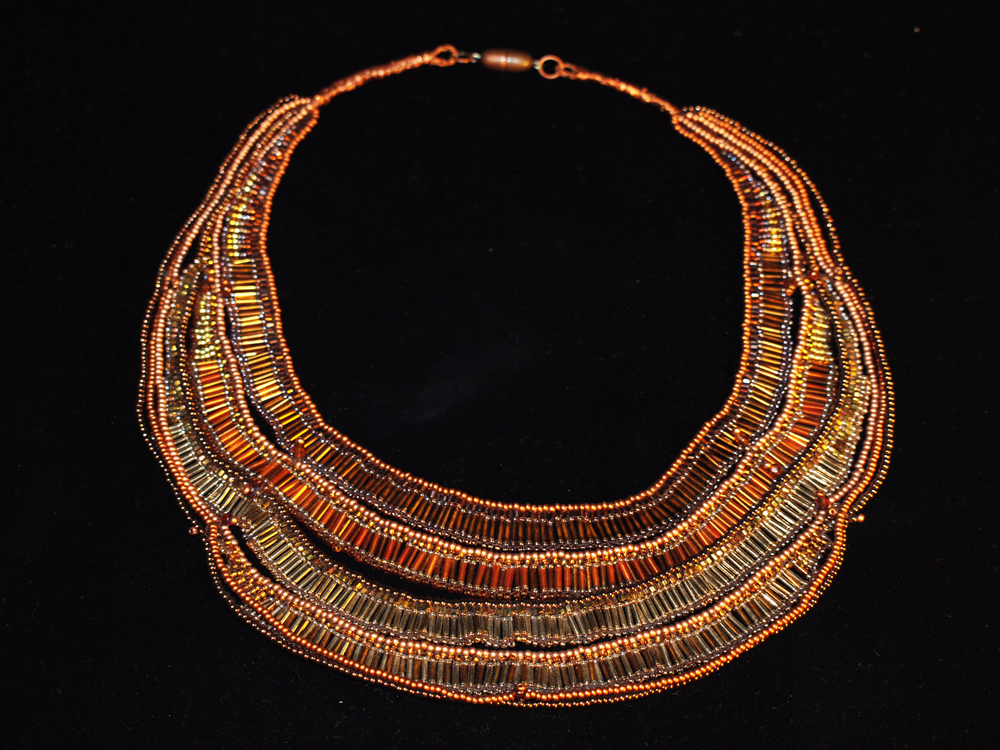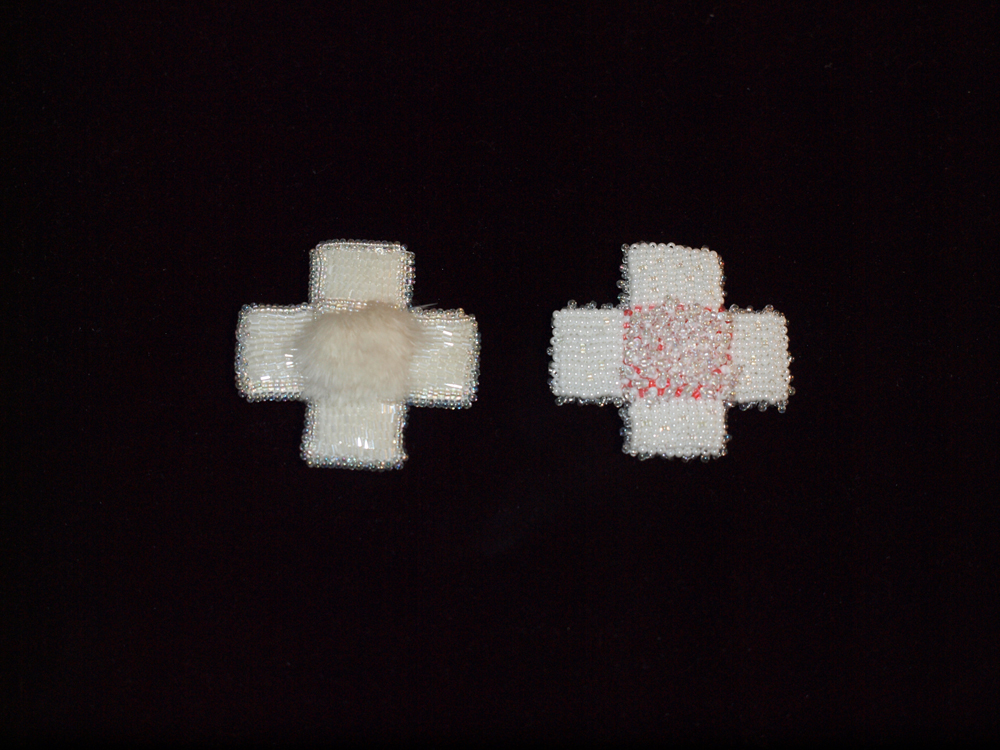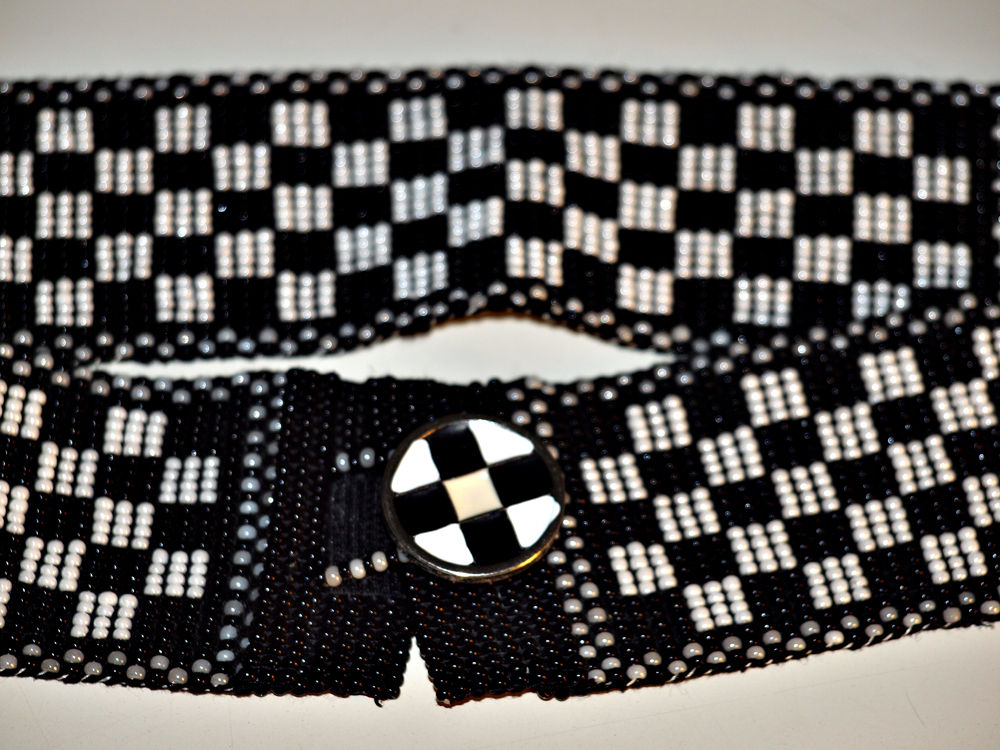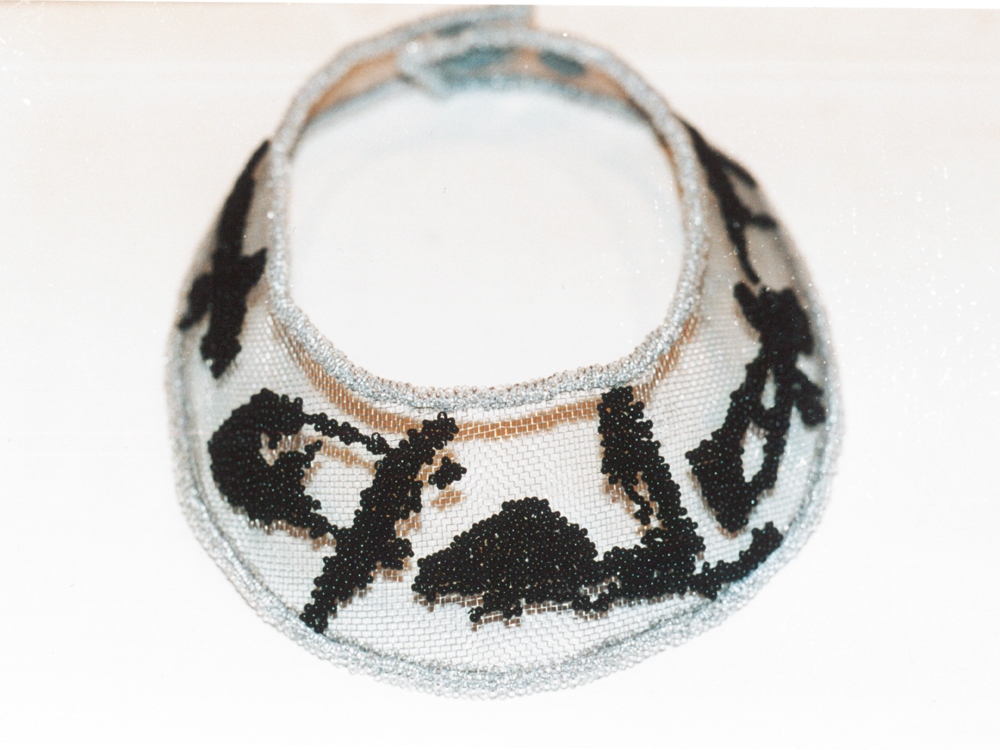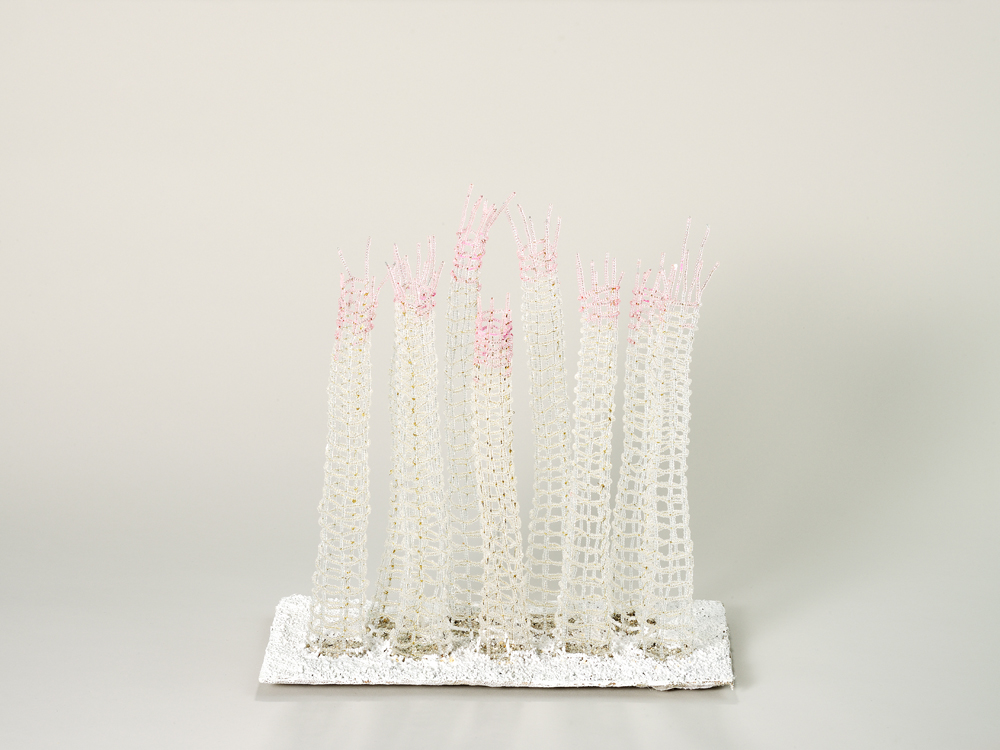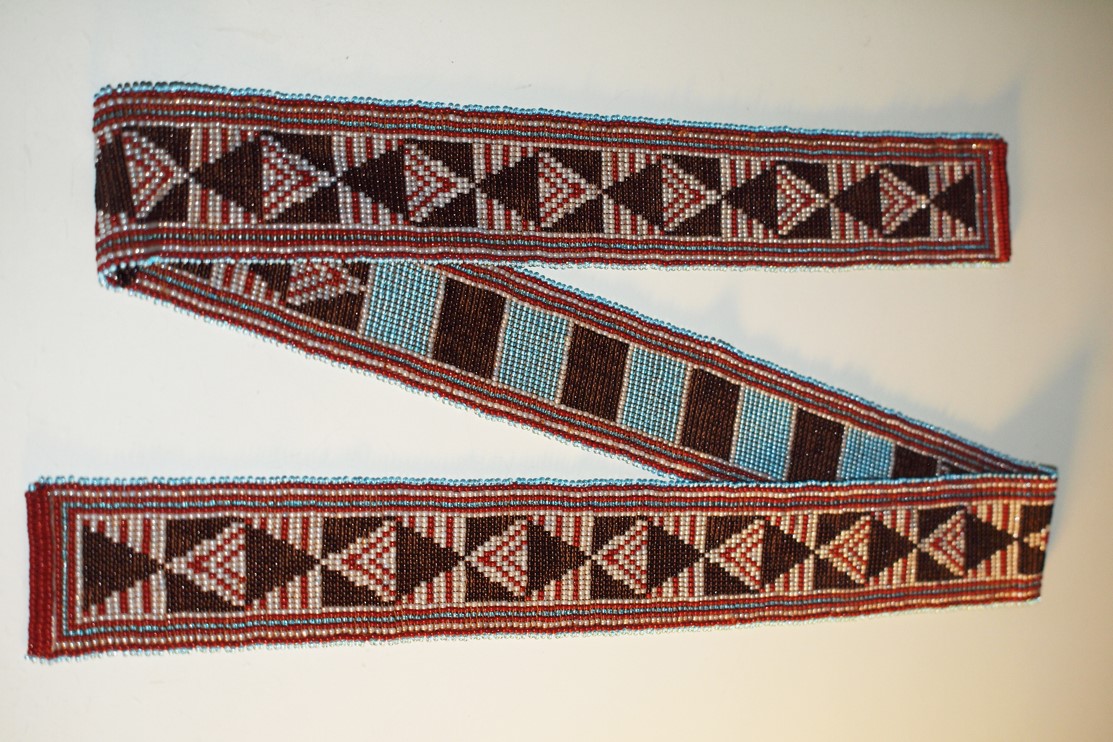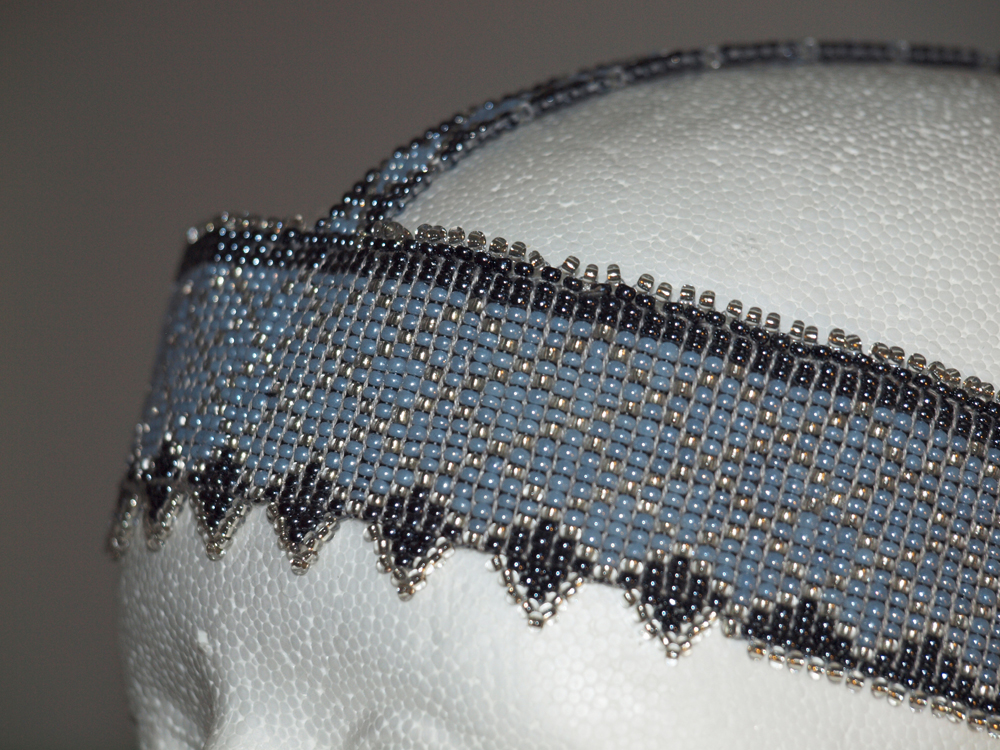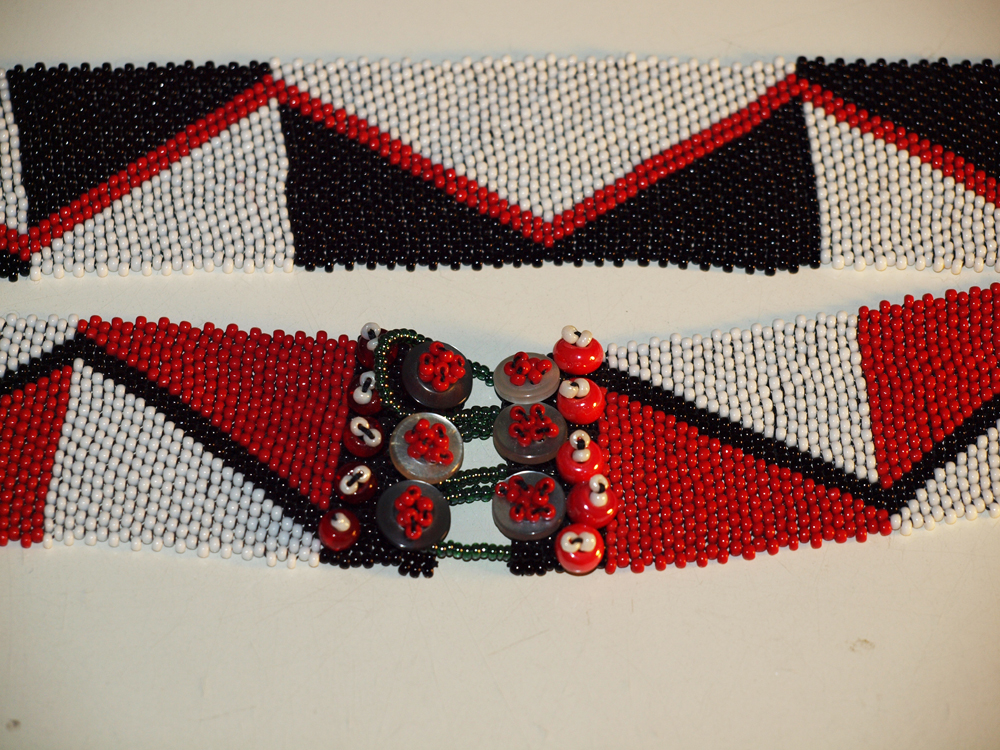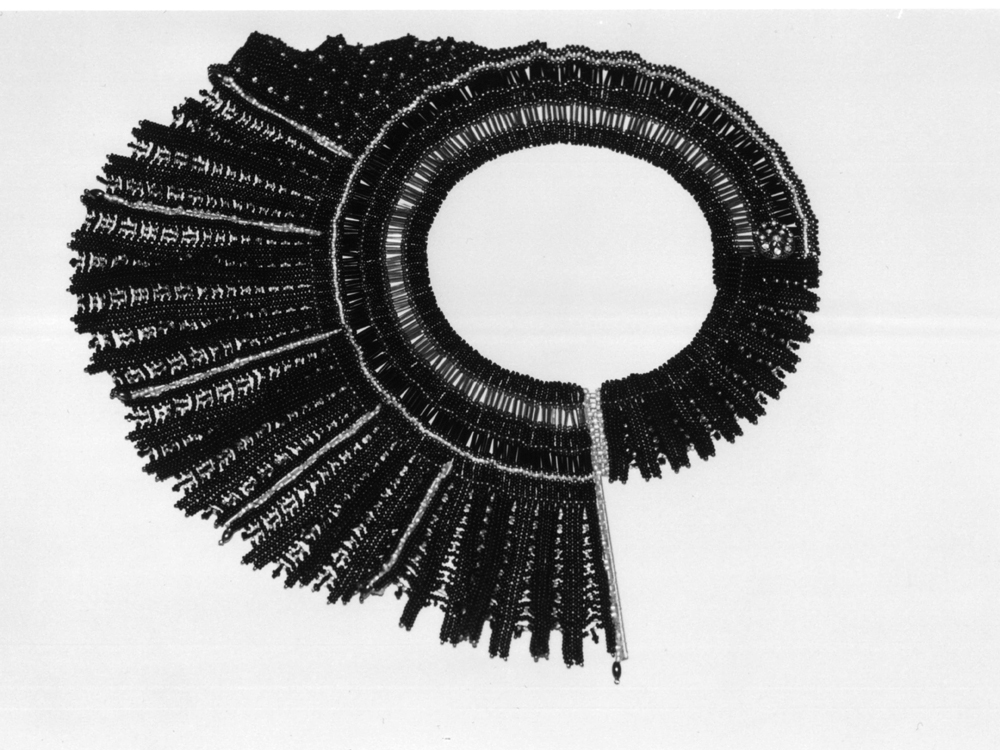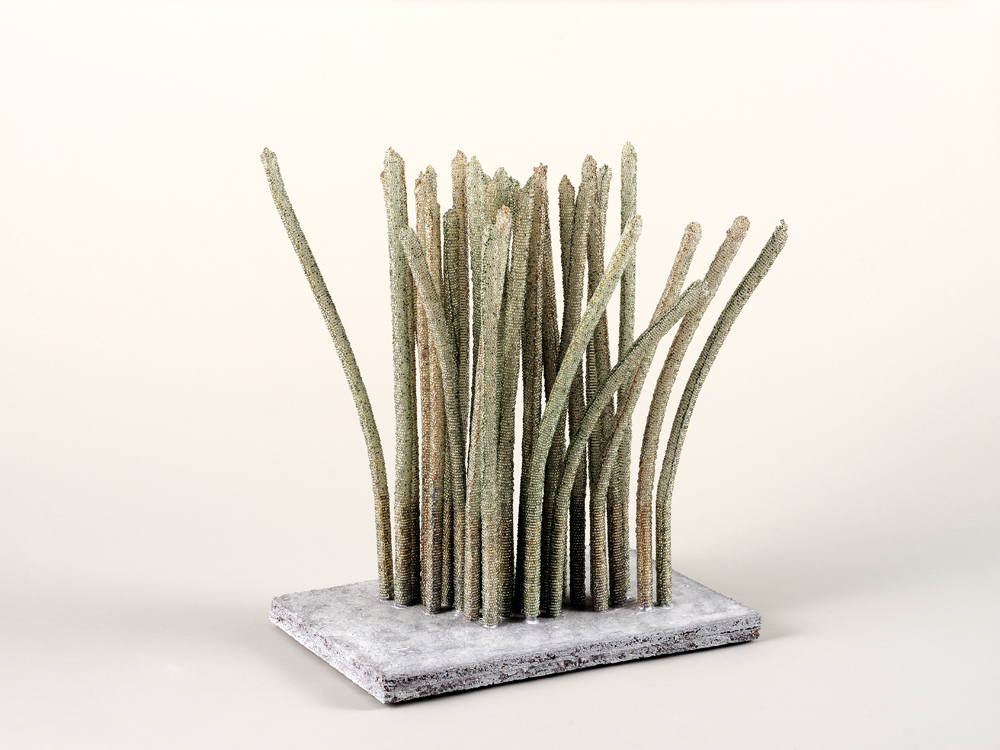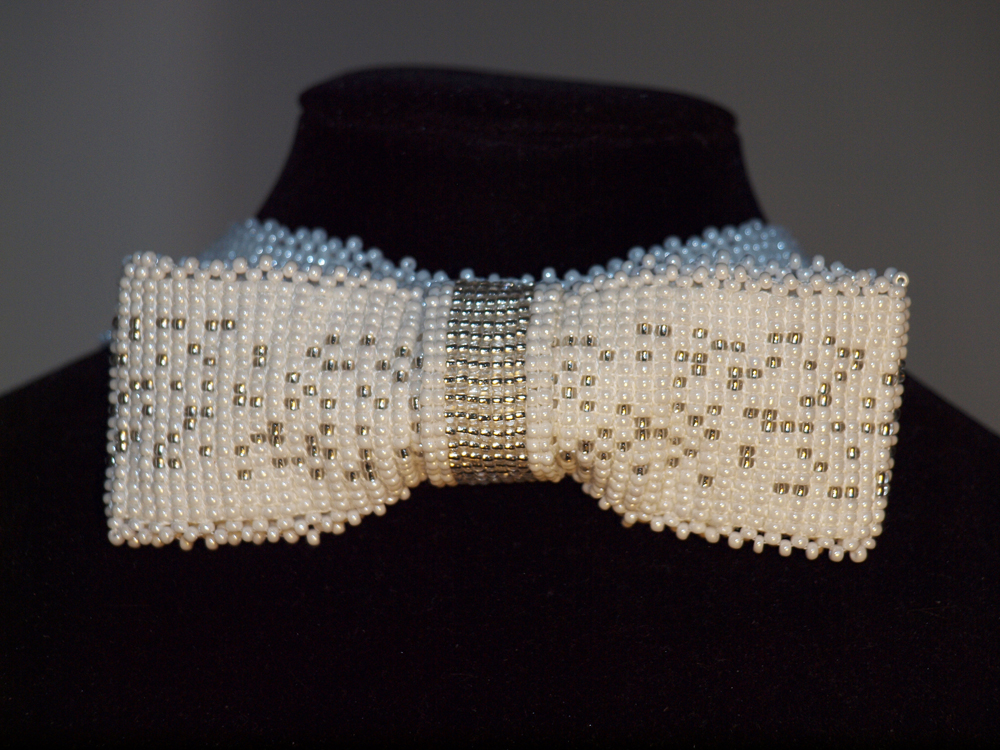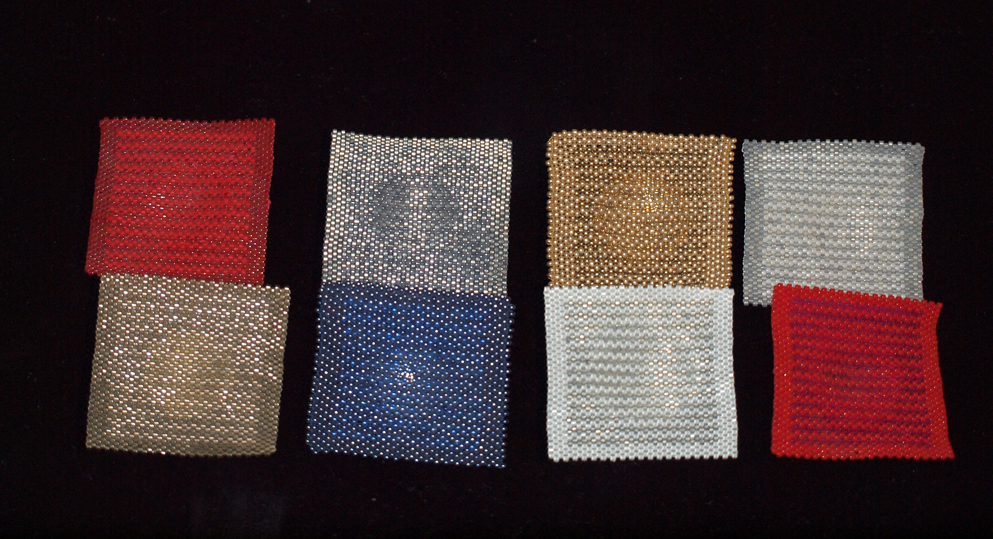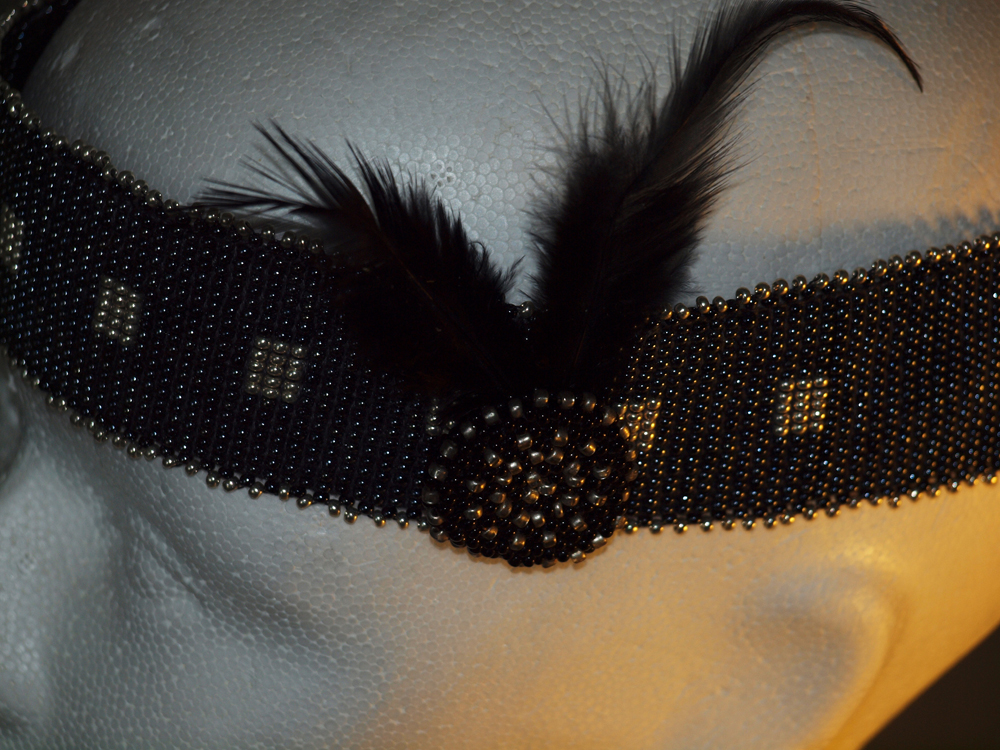
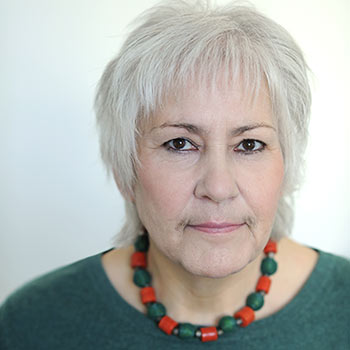
Ute Wennrich
BEADED JEWELLERY FOR INDIVIDUALISTS
Ute Wennrich has been involved with the material of tiny glass beads (rocailles) and the numerous possibilities of turning them into unique pieces of jewellery. As an artist, this inevitably led her to using these different techniques for her art objects as well. Here we present Ute Wennrichs beaded jewellery. Though having been designed in a way that they can by all means be worn, all pieces lie in a field of tension between applied and free art.
Glass Objects by Ute Wennrich
Attracted by the colours and brightness of glass, Ute Wennrich has been exploring that material for some time. To be more precise, the fascination which glass in the form of tiny globules – seed beads – holds for the artist has turned for her into the challenge of using these beads to create objects. Ute Wennrich shares her fascination with the people from pre-historic times, as has been shown by the oldest finds of the Nuzi beads from Mesopotamia east of the Tigris River. Glass is one of the oldest materials used by mankind. Glass is created from liquid earth. Obsidian, for instance, is a natural glass of volcanic origin. The raw material of glass are silicates. Molten silicates that have been mixed with additives undergo a crystallization process as they cool. Colouring of the glass is achieved by addition of and / or coating with various metals. These metals are substances which are also found in the ground. The artist uses glass globules threaded onto wire to create objects which float in space, crawl on the ground or sway in the current. They are “creatures” which, like strange beings, seem to have arisen from the deep sea. Emerging from black waters and suddenly bathed in light, they flash in enchanting colours. At the same time, they radiate a transparency that allows our senses to perceive the inner nature of things through their exterior shape. Despite their organic look, these wire sculptures remain abstract, expressing the transformation from natural object into artistic reinterpretation. With this group of works, Ute Wennrich has explored new ways towards understanding that changeability in diversity lies at the basis of all existence.

